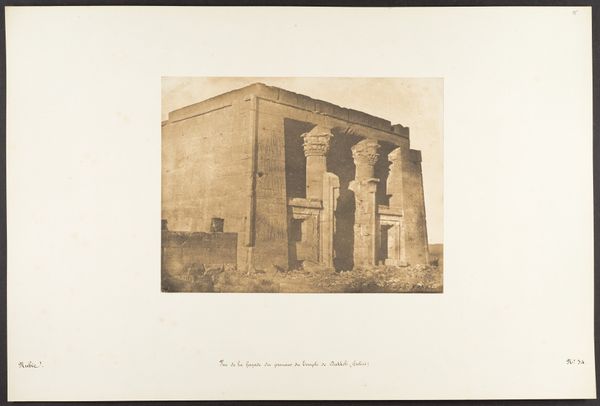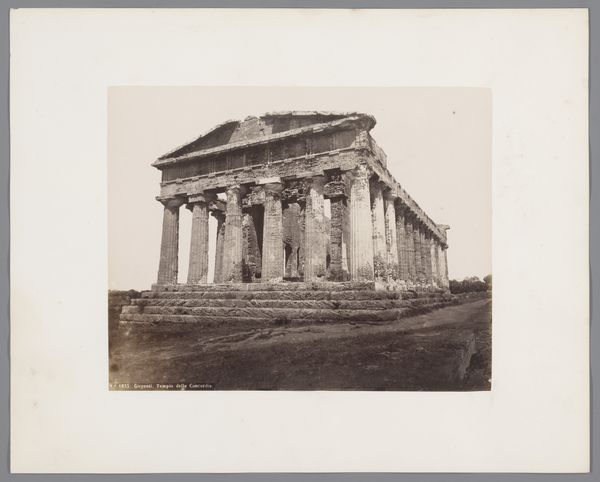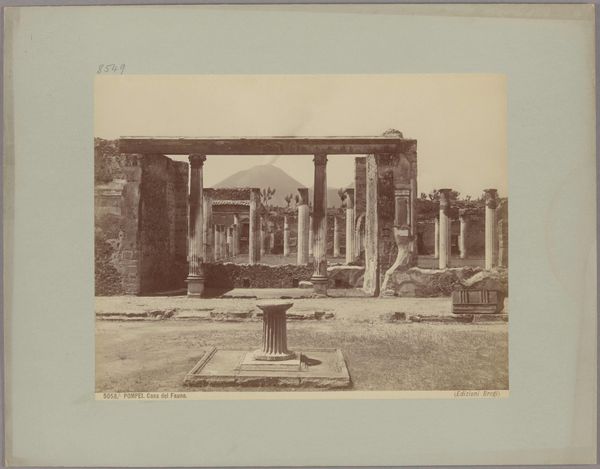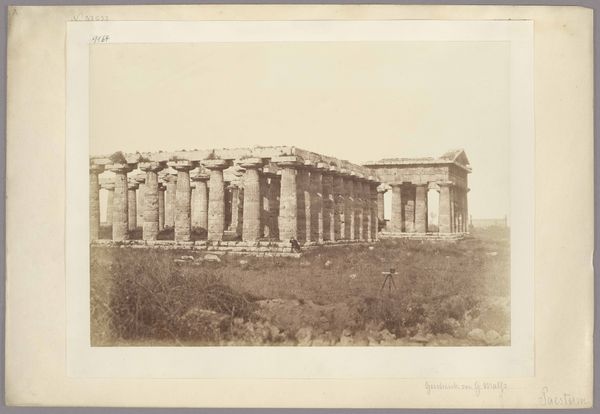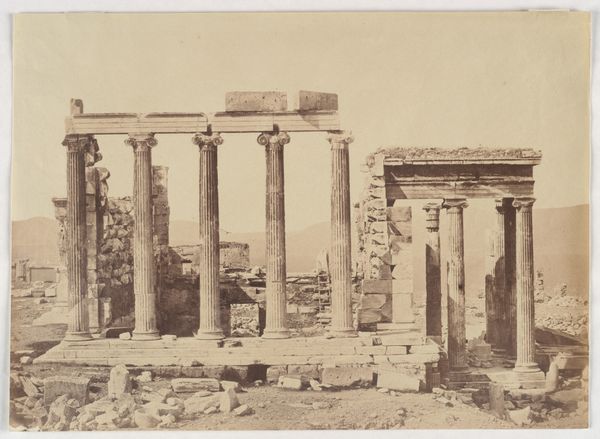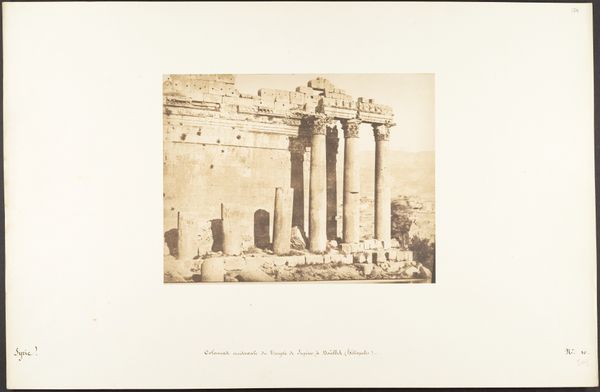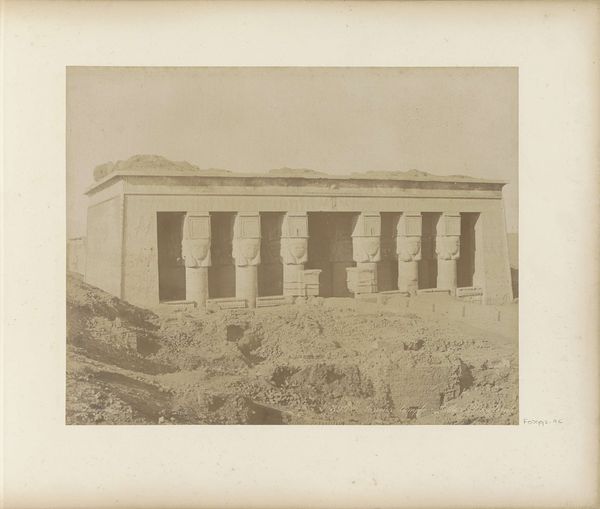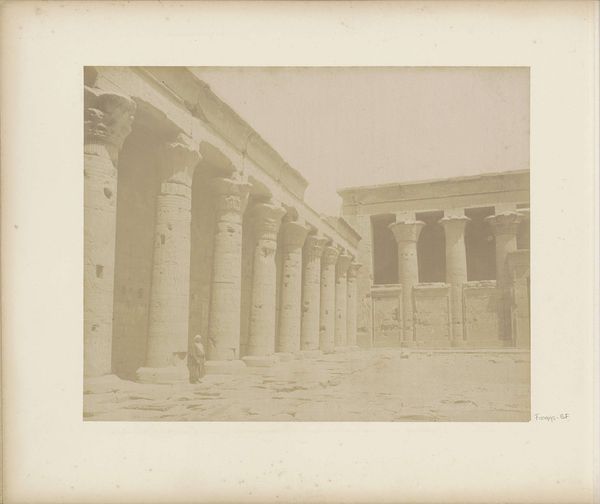
Frontaal zicht op de Tempel van Neptunus te Paestum, Italië 1857 - 1914
0:00
0:00
print, photography, gelatin-silver-print, architecture
# print
#
greek-and-roman-art
#
landscape
#
photography
#
classicism
#
ancient-mediterranean
#
gelatin-silver-print
#
cityscape
#
architecture
Dimensions: height 250 mm, width 325 mm
Copyright: Rijks Museum: Open Domain
Curator: Here we have Giorgio Sommer's photographic print, "Frontal view of the Temple of Neptune at Paestum, Italy," likely created between 1857 and 1914. The medium is listed as gelatin silver print, which renders a warm sepia tone across the image. Editor: The mood strikes me immediately as melancholic. Despite the temple's imposing scale, there’s a definite sense of decline – even romantic ruin. I’m thinking of ideas around empire, legacies, and lost worlds... Curator: Sommer's work often intersected with the Grand Tour tradition. Wealthy Europeans visited classical sites, and photography served as portable souvenirs, shaping perceptions of antiquity. Consider how Sommer's business catered to these travelers, framing classical ideals within a market economy. Editor: Exactly! It is a packaged experience of history for those with privilege. This frontal view aestheticizes it—cleans it up. Yet, who actually gets access to this vision of history? How is it framed in terms of colonial power dynamics? The Temple, even in this faded state, remains monumental but who profits from it? Curator: I agree completely. Think about the politics embedded within the image’s creation. This photograph immortalizes not just the temple but also the photographer's ability to access and capture it, subsequently commercializing an image of a past civilization. The choice of such a clear and formal composition speaks to a very deliberate way of representing historical value. Editor: Absolutely. The photograph almost implies a neutral perspective; however, what strikes me most is the silence it projects. Who inhabited this space? What were their lives like, outside the aestheticized ruins that still stand today? We need voices, narratives, that actively fight against such a sterile capture of space. It forces a very active and challenging viewership. Curator: These historical photographs are important artifacts. It prompts essential discussions about access, privilege, and representation, far beyond just admiring a beautifully preserved structure. Editor: Definitely. Thank you for helping me better situate Sommer's photograph within complex networks of socio-political realities, beyond simple classical ideals.
Comments
No comments
Be the first to comment and join the conversation on the ultimate creative platform.

